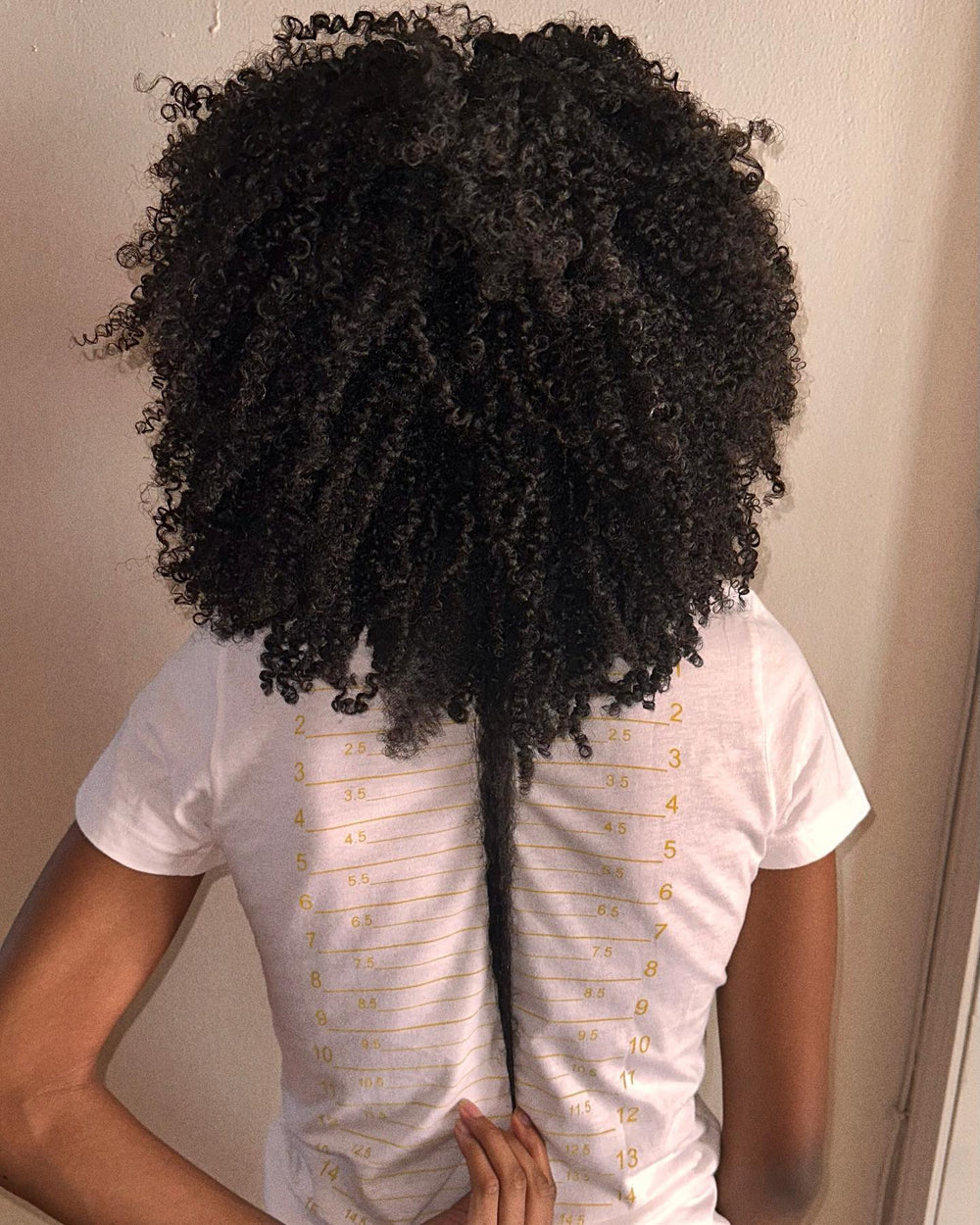Types of Hair Loss - What Causes Hair To Fall Out?
People typically lose 50 to 100 hairs a day. This usually isn't noticeable because new hair is growing in at the same time. However, the real problem arises when it doesn’t regrow. That is when new hair does not replace the hair that has fallen out. It may happen suddenly or slowly over time. Does it happen to you too? Continue reading to learn more about types of hair loss and how to use this knowledge for healthier hair.
How Hair Grows?
The human scalp contains over 100,000 hair follicles. Hair grows from a root at the bottom of a follicle under your skin. The hair on the head grows at a rate of about half an inch per month and stays there for up to several years. Each hair follicle on a person's scalp has its own life cycle consisting of four phases:
- Anagen phase - active hair growth that generally lasts between two to six years
- Catagen phase - transitional hair growth that lasts two to three weeks
- Telogen phase - resting phase that lasts about two to three months; at the end of the resting phase the hair is shed and a new hair replaces it. The growing cycle starts again.
- Exogen phase - the part of the resting phase where the old hair sheds and a new hair continues to grow. This phase lasts between two and five months.

Is Hair Loss Normal?
Yes, it’s very normal. We all lose hair; it’s all part of the hair growth cycle. According to the American Academy of Dermatologists, it is normal to lose 50 to 100 strands of hair a day. However, if you notice thinning in larger areas of your scalp, it would be best to visit your doctor or dermatologist.
What Causes Hair To Fall Out?
Increased hair loss can be a result of stress or a health condition, some of which are:
- alopecia
- thyroid conditions
- lupus
- nutritional deficiencies
Styling products and tools are also common culprits in hair loss. Here are some of them:
- blow dryers
- straightening combs and brushes
- flat irons
- hair color
- bleaching agents
- perms
- relaxers
Is there Female Pattern baldness?
Yes, female pattern baldness does exist. It occurs because of a genetically determined shortening of anagen - the hair strand growing phase, and a lengthening of the time between the shedding of a hair and the start of a new anagen phase. This means that hair needs more time to start growing after it falls out during a normal growth cycle. As a result, thicker, pigmented, longer-lived "terminal" hairs are replaced by shorter, thinner, non-pigmented hairs called "vellus."
Female-Pattern baldness
In women, androgenetic alopecia begins with gradual thinning at the part line, followed by increasing diffuse hair loss radiating from the top of the head. A woman's hairline rarely recedes, and women rarely become bald. Almost every woman eventually develops some degree of female pattern hair loss, this most often occurs around the onset of menopause.

Male-Pattern baldness
Male pattern baldness, or androgenetic alopecia, typically occurs later in life as a result of changing hormone levels. This form of baldness is hereditary. Our genes affect how sensitive the scalp is to a hormone called dihydrotestosterone (DHT), which shortens the hair growth phase. Also, hair follicles become smaller in response to DHT and subsequently produce smaller and finer hairs. This most commonly occurs in the late 20s and early 30s.
Alopecia
Alopecia is the medical term for hair loss, both localized and diffuse, from the scalp or any part of the body. Hair loss may occur naturally or it may be related to disease or the use of certain medications. Depending on the severity of alopecia, symptoms can range from a small bald spot to complete loss of all hair on the body. The type of alopecia is divided into two groups - scarred and non-scarred. Keep reading to learn how to recognize some of the most common forms of hair falls.
Cicatricial Alopecia (Scarring Alopecia)
Scarring alopecia refers to a group of rare disorders that destroy hair follicles and replace them with scar tissue and ultimately result in permanent hair loss. Inflammatory skin conditions such as cellulitis, folliculitis, acne and other skin disorders, such as some forms of lupus and lichen planus, often result in scars that destroy the ability to regenerate hair. This form of hair loss affects African American women more often.
Central Centrifugal Cicatricial Alopecia (CCCA) is a form of scarring alopecia on the scalp that results in permanent hair loss. Hair loss is usually gradual and radiates outward in a circular pattern and first appears on the crown of the head. It’s linked to harsh styling practices such as chemical relaxers and excessive pulling from tight braids and weaves.
Lichen planopilaris is a type of scarring hair loss that occurs when a relatively common skin disease, known as lichen planus, affects areas of skin where there is hair. Lichen planopilaris destroys the hair follicle and then replaces it with scarring. The condition typically causes intense itching and may be accompanied by burning and tenderness.
Hereditary Hair Loss (Alopecia Androgenetica)
Alopecia androgenetica is the medical term used to refer to hereditary hair loss. Men and women with androgenetic alopecia are born with inherited hair follicles that are sensitive to a hormone called dihydrotestosterone (DHT). DHT causes hair follicles to miniaturize, creating thinner and finer hair. Bald spots should be treated as early as possible, and hair regrowth can often be reactivated within 3 years after hair loss.
Diffuse Hair Loss (Alopecia Diffusa)
This refers to severe hair loss on the whole head (although there are cases when it affects the whole body). Various reasons are known for premature transgression from the growth phase (anagen phase) to the hair loss phase (telogen phase). These include high febrile infection, lack of supplements, hormonal imbalance in women such as pregnancy, childbirth, menopause... We mustn’t forget, stress is also an enemy. Fortunately, this condition is very curable when the cause is discovered and alleviated.
Circular Hair Loss (Alopecia Areata)
Alopecia areata is a condition that causes hair to fall out in small patches, which can be unnoticeable initially. The condition develops when the immune system attacks the hair follicles, resulting in hair loss. The condition itself is difficult to predict. Unfortunately, there’s currently no cure for alopecia areata, but there are a number of treatments that can help prevent future hair loss. Some of them are:
Topical immunotherapy or applying chemicals directly to the scalp to cause an allergic reaction. In turn, it stimulates the immune system and aids in hair regrowth.
Topical minoxidil which works by helping the hair to grow faster after the follicle is no longer under attack by the immune system and is capable of producing hair.
Topical anthralin which creates an irritating reaction that stimulates the immune system as well as hair regrowth.
Corticosteroid injections that work by modulating the activity of the immune system and reducing inflammation. They’re injected into hair loss sites to encourage new growth.

Oral corticosteroids that suppress the immune system and inflammation in the body, which in turn encourages hair regrowth.
There are several forms of alopecia areata, including:
Alopecia areata – (patchy hair loss) resulting in one or more round patches of hair loss.
Alopecia totalis - characterized by the complete loss of scalp hair.
Alopecia universalis - total hair loss on the scalp and body.
Ophiasis - hair loss that follows a band along the sides and lower back of the scalp.
Traction Alopecia (Trichotillomania)
Traction alopecia is hair loss caused by hair being pulled excessively in the same way for a long time. This can happen to anyone who wears their hair tightly pulled, whether in braids, dreadlocks or a ponytail. Repeated straining of hair follicles can pull out hair strands and even damage the follicles. Occasionally wearing tight hairstyles is not a problem, and if you want classic hair bands you can replace them with silk bands or scrunchies. African-American women often experience this type of hair loss.
Chignon alopecia is a form of localized traction alopecia that results in hair loss at the crown of the head due to frequent wearing of hair in a tight bun.
Involutional Alopecia
Involutional alopecia is the gradual thinning and loss of hair that comes with age, and it’s a second most common type of hair loss. Involutional alopecia is a condition that shortens the growth phase of your hair follicles and forces them into the resting phase faster than usual.
Hair Loss through Chemotherapy (Alopecia Medicamentosa)
Although chemotherapy is designed to treat cancer cells, unfortunately, it can affect the hair and scalp. Alopecia medicamentosa is one of the potential side effects of chemotherapy and radiation treatments. Normally, hair regrows approximately 3 months after the end of chemotherapy, but there have been cases of permanent hair loss disorder.
Some hair loss conditions go by the name effluvium, which means an outflow. Effluviums characteristically affect different phases of the hair growth cycle.
Anagen effluvium is a form of hair loss triggered by a stressor such as a serious infection, exposure to toxins, or harsh medical treatments such as chemotherapy. The positive side is that this condition is reversible. Anagen effluvium is self-limiting, and the duration of the disease depends on the amount of toxicity your body has been exposed to.
Telogen effluvium is the second most common form of hair loss where hair falls out more than usual, causing general rather than patchy hair loss. In a person with telogen effluvium, about 30% of the hairs stop growing and go into the resting phase before falling out. It most commonly affects the top of the scalp and in some rare cases causes a receding hairline. Fortunately, this condition is temporary, and hair in most cases begins to grow after about six months.
How can I prevent hair loss?
Don’t wear tight hairstyles like braids, ponytails, or buns that put too much pressure on your hair. You can also try not to pull, twist, or rub your hair. Diet is certainly important. Make sure you’re eating a balanced diet that includes adequate amounts of iron and protein.
What is the best treatment for hair loss?
While there are many causes for hair loss, the most likely cause is genetics. Finding out whether or not hair loss is caused by genetics or another reason can help determine the best course of treatment. Since there are several conditions that can affect hair growth and loss, seeing a doctor prior to self-treating is recommended. After the consultation, you can arrange treatments that may involve oral or topical consumption or some other methods such as laser or surgical hair restoration (hair transplant). Today, there are really many options suitable for various budgets. There’s no wrong choice. It’s up to you to decide which treatment makes the most sense for you.

You can also try it in a natural way using products that give the appearance of longer and fuller hair. Our Hair Growth Starter Bundle consisting of Hair Growth Vitamins and Hair & Scalp Growth Elixir Oil are just for you. This all-natural herbal combination is packed with nutrients necessary to promote the appearance if hair growth and thickness from within.
Finally remember, no matter how you are affected by hair loss, you can be sure that there are others who feel the way you do. Keep in mind that you can stop or even reverse hair loss with treatments. If you notice any symptoms or suspect that you have any of the types of hair loss, consult your doctor or dermatologist. For minor questions and concerns such as choosing the perfect hair care routine, you can contact us! We’re expecting you!



 5min Read
5min Read




















Leave a comment